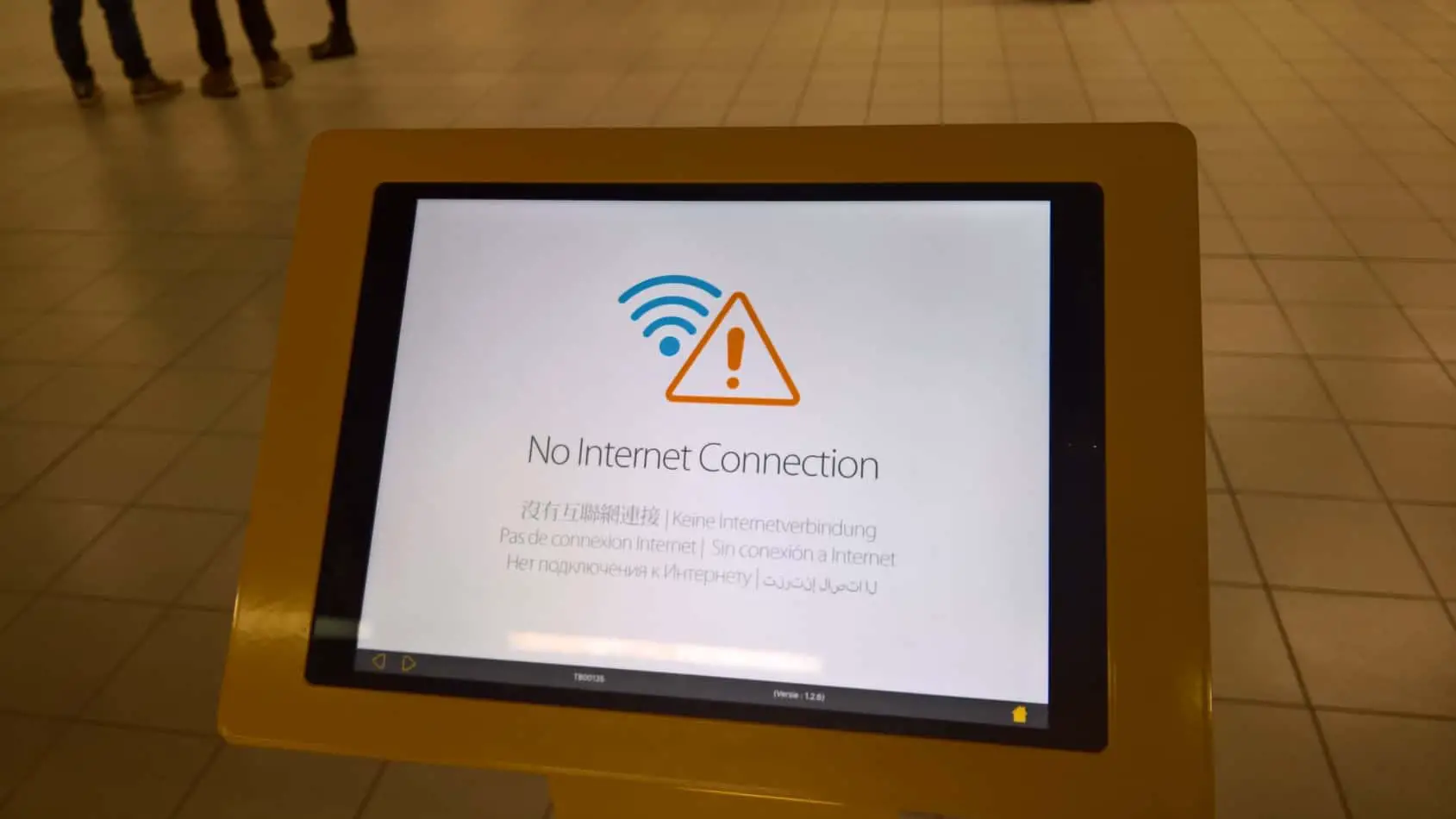The way technology is evolving on almost daily, if not hourly basis, then it wouldn’t be wrong to say that virtually all the traditional “dumb” devices so to speak, are slowly making their way over into their smart versions. This gives the whole concept of the Internet of Things (IoT) a considerable boost in terms of how these gadgets are bringing a value-added change into our lives. As and how this happens, it keeps on intriguing the mainstream audience and helps them adapt this not a cultural but a necessary concept of smart home automation. But do bear in mind, that as and when these devices keep on being added into your own ecosystem, there is a fair amount of chance that the old traditional Wi-Fi access points and routers that you may have been accustomed to using, would no longer be adequate enough to withstand the beating given by each of these IoT devices.
Being able to finally have a home filled with gadgets that the famous 60’s cartoon used to portray, is now very much a dream come true. Being able to control your devices and toggling them on or off, or even controlling them via your voice does have a significant impact on your Wi-Fi network and not having that right fix, can easily outlay the benefits of having a home that is designed to be completely automated. Myself at Smartnutter.com, make sure that I propose the best possible solutions which would allow you to create your smart home and remain cost-effective at all stages.
You are in luck if you have been reading through till this particular paragraph of my blog. I have researched three different products that would allow you to remove that unnecessary burden from your Wi-Fi network and thus enabling you to operate your smart home devices in the smoothest and fastest way possible.
The article is a clear indication of your intent to know if you should be spending that extra cash on upgrading your internet speed to cater to your smart home automation. Or maybe you are interested to know if these devices are capable of operating without the internet? Then the straight forward answer to that is “YES”. You very well can operate smart home gadgets without the need of having an internet connection. And they work just fine without it.
But what if I tell you that you would be losing out on almost all of the benefits that each of these smart gadgets has to offer if you have an internet connection in place along with the Wi-Fi. Read below to find out what they are. If you are in a rush, then down below is the table of contents, just click on “expand” and jump to the topic which you are keen to read about!
Table of Contents
Let Us First Understand, Why a Smart Home Needs Internet
Internet is the backbone of any industry, and in today’s world, one can barely survive without it being present in their lives. I am sure you all would agree to this particular statement of mine. Heck, thanks to the internet that you are reading this blog isn’t it! Yay Internet!
If you are looking to set up all your smart devices at home without giving them permission to access the internet, then you would be missing out on a lot of features such as
No More Updates to the Firmware
It is very crucial to note, that you should always update your smart device’s firmware to their latest version whenever the device gives you the prompt. Stop on the habit of pressing “REMIND ME LATER” since updating it to the newest firmware eliminates security vulnerabilities and phased out any bugs that were otherwise present in the current version of the gadget. Updates also attend to a plethora of other issues and provide you tweaks and additional features; which in return enhances your user experience.
That being said, all of the firmware updates are performed OTA (Over the Air), which realistically means that your device needs an active internet connection to download these updates and perform the upgrade on your particular smart device. There is no other way of updating your devices. Well, let’s be honest! There might be one! But that requires you to disassemble the smart device situated in your home, hook it up with a USB cable and plug it into your laptop or a desktop machine. Which let’s face it, is a cumbersome process and both times consuming. You wouldn’t want to remove 50 smart devices in your smart home and hook them up to your machine just to perform an upgrade, and then call an expert electrician or a technician to connect them back up. This is just, plain bizarre!
Imagine having a smart home hub at your home, or even better; an Amazon Alexa or a Google Home. To avail all the features of such voice assistants, you need to have an active internet connection available on these devices if they are to perform and function the way the manufacturer intended them to. Without the internet, they are just mere devices that perform in a minimal capacity. Money lost there if I would say!
Being Able to Connect Remotely
One of the added benefits of having smart home automation in place is the ability to control all of your devices remotely with the help of a smartphone app. This won’t be possible if your devices do not have access to the internet. Having remote access to your devices enables you to answer your Ring doorbell even if you are miles away from home and want to punch your mum into your house. Remote access to your smart devices also gives you the option to toggle switches on and off, even control the temperature measurements on your smart thermostat. All of this is only possible if you have an internet connection available to your smart gadgets.
Let me clear one doubt here. Yes, you can connect all your devices in your home to your Wi-Fi router without the internet, but if you plan on doing anything or controlling your devices while you are not at home (outside of your home network); then I’m sorry! That would not possible unless you allow these devices access to the internet. The plus point of home automation is that it also helps you ramp up the value on your house and thus if you ever plan to sell it, you should be able to get appraised for the effort you have invested into setting up the home automation and thus eventually end up raking extra profits.
How do your smart devices communicate with each other without the presence of the internet?

Glad that you asked! Let us dig into a bit more
technicalities here. All the smart devices get connected to your Wi-Fi router
using the SSID made available via the router. It could be both on a 2.4 GHz or
a 5 GHz frequency. Once the basic password authentication takes place, the
smart device then gets issued with a dedicated IP address. The gateway is the
route, or in simpler words, gateway is the IP of the primary Wi-Fi router that
you are connecting to. Once the IP gets allocated to your smart device, all the
communication takes place through this gateway.
So what if now you have do not have any active internet connection on your
Wi-Fi Router? Well, all the devices that are connected to the Wi-Fi Router
would still function as normal. Such as integration and communication amongst
all the smart devices connected on the network. Once you connect your
smartphone to this Wi-Fi network onto which the rest of your smart devices are
connected, you would be able to communicate with them. But only till you remain
connected to this particular Wi-Fi network of yours. Once you step out from
your home and switch to your mobile data connection; this connectivity would be
lost.
If you are concerned that your internet speed at home would take a massive hit, then your best bet is to read my article on how much bandwidth does a smart home requires and you would be glad that you read this article.
To mitigate this and enhance your user experience out of your smart home automation systems, it is always advised to keep your gadgets connected to your Wi-Fi router that has internet enabled.
Hello, remote access!
Technologies other than the traditional Wi-Fi
So, you have finally gotten your hands on complete smart home automation gadgets and now are facing the issues with slower speeds and other latency issues just because your Wi-Fi router isn’t up to the mark? I know you have invested in a decent router, but why the problem?
The answer to your troubles is
What are these you may ask? Z-Wave and ZigBee are two different types of IoT communication technologies that assist smart homeowners to integrate almost all of their gadgets flawlessly to their current router. These devices are known to produce the best results and help carry out your smart home automation activities without any fuss. Let us dig further into what Z-Wave and ZigBee bring to the table of a smart home.
Z-Wave

Z-wave is a wireless communications protocol that is well renowned in the smart home automation lifecycle. It consists of a Mesh network that is capable of handling a magnitude of smart devices and connects them seamlessly to your Z-Wave compatible router. It uses low energy radio waves to create communication platforms in between your smart devices at home or at the office. This then provides you with the ability to control your smart devices, remotely from anywhere in the world without the hesitation of lag and latency issues.
Z-wave itself uses a controller hub. It can come in two different types
- Hub
- Integrated into smart devices for your home
Technical Specifications of Z-Wave for Home Automation Solutions Are
| Radio Frequency Range | 800 to 900 MHz |
| Physical Range | 100 meters |
Either way, its primary task is to connect to a Wi-Fi enabled router and then provide uninterrupted connectivity in between all the smart devices present in your environment. You can then easily control the access to these devices.
Z-Wave topology is widely being accepted by the consumers and is being affordable in such a way that you just have to look at the “Z-Wave Compatible” logo when you plan on buying a new Wi-Fi router that you intend to hook all your smart devices to.
A list of compatible Z-Wave devices those already are floating in the market are
- Samsung SmartThings
- Philip Hue Bridge
- Wink Smart Hub
Be wary though when you plan on picking up hubs. You need to read the product specifications page and find out if all of your current installations of smart devices at home are compatible with it or not.
ZigBee
ZigBee is yet another wireless communication protocol that is used primarily in smart home automation. It mainly operates on a 2.4 GHz frequency, just like any other random smart device that you have at your home. It is based on an IEEE’s 802.15.4 personal area network standard. How do I know of it? I googled it – Yay google!
Well, all you need to know is that ZigBee is a concept that has been present in today’s world since the past decade. It is widely considered as an alternative to a conventional Wi-Fi and Bluetooth for smart devices using low powered frequencies that do not require boatloads of bandwidth to operate. A prime example of which is the smart sensors at your homes.
ZigBee claims to have a more secure encryption protocol and platform, which is widely used in the banking sector. Similar to the Z-Wave, ZigBee uses a controller hub that has a reasonably intuitive GUI for easy configuration. The full adaption of this protocol has made it a common thing and bases the foundation of connectivity in any new smart home automation infrastructure.
Just like the Z-Wave, ZigBee is adapted by both
- Philips HUE Smart Bridge
- Samsung SmartThings
Frequently Asked Questions basis this article
Just to shed some more light on most common questions that may arise in your mind while reading through this article. Here we go!
Does Google home work without Internet?
The whole purpose of home automation is that it can automate your tasks and gives you the liberty to control your home, remotely. So I would say, MAYBE! But the whole intent of a Google Home is to provide you with features that basically require an active internet connection if you are to gain full benefits out of your smart home installations connected via the Google Home. So there is your answer!
Can Alexa be used without internet?
Just like any other smart home hub, you have the option to integrate everything together and connect them and let them talk to each other. But the whole purpose of Amazon Alexa is to provide you with the latest updates, news, broadcasts, snippers, charts, alerts etc. These all require an active internet connection. You may however just make your peace with it if you do plan on using it without an active internet connection. I hope this answer solved the riddle!
Do you need a hub for a smart home?
Not all the smart devices that you connect need to be routed via the smart hub. You can get away with connecting directly to such devices with the help of the smartphone app present. A prime example of such a product is the NEST product line. These include but are not limited to doorbells, locks, smoke alarms and smart thermostats. These can be connected back-to-back using the smartphone app, and you do not necessarily need a smart home hub for them to function.
Conclusion
Oh, you must be anxious into reading this particular bit of the article. To conclude this topic, the answer is relatively simple. You can most certainly operate the smart devices that you already have or are planning on buying at your home, without the need of an internet connection. But do bear in mind the drawbacks of not having an active internet connection available to these gadgets, the limited functionality issue that you would need to face, missed security updates, firmware upgrades and more. If you are ok with that, which realistically after reading this article; you shouldn’t be, then please feel free to disconnect the internet to these devices and live in a dumb smart world. Precisely, that is what we would call such a smart home automation solution without internet connectivity available.
The situation is a lot different, if you fall into the senior citizen’s category or are elderly and have spent most of your time without the availability of internet, then nothing stops you from automating your home into a smart home with the absence of internet.



